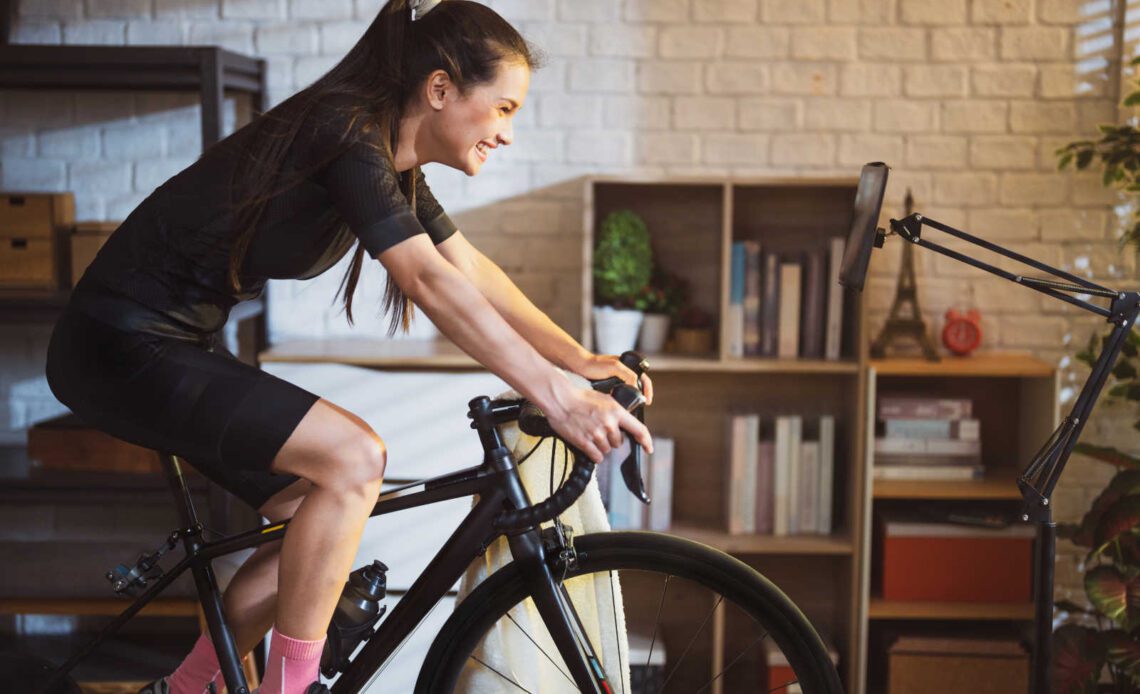For many of us, it’s indoor training season. (But hey, you can still ride outside if you’re dressed well!)
Riding inside is a great way to stay fit in the winter months, but it can sometimes be a sweaty mess. Although you don’t need to get quite as kitted up as a brisk outdoor ride, you should still be careful to stay clean and avoid any infections or sickness. Molly Hurford, author of “Saddle, Sore: Ride Comfortable, Ride Happy,” is an expert on all things hygiene and weighs in on what you should do to keep your body fresh and healthy.
Clean shorts…always
“Just because you’re alone in the basement is no excuse to wear yesterday’s kit. I’ll say it one more time for the people in the back: Your chamois is a single-use situation,” Consummate Athlete‘s Hurtford says.
That means you should never re-wear a chamois without a proper wash.
“This especially applies to trainer time, since you won’t have the air flow to your nether regions you’d have if you rode outside, which means it can get a lot more swampy down there. You’re better off riding in regular running shorts rather than a dirty chamois when it comes to staving off the discomfort of a bacterial infection.”
Hurford also says you should make sure to wash your shorts inside out so the chamois gets plenty of rinse and repeat action. “If you only have one pair of cycling shorts… a second pair better be at the top of your Christmas wish-list.”
Heart rate monitor belt
When you’re cranking out the miles you can definitely get pretty damp under your jersey or base layer, and your HRM belt is going to get wet. That being said, it’s not quite as vital to clean as often as your shorts, Hurford says.
“This is less important than your chamois but still worth doing on the regular for a couple of reasons. First, washing your heart rate strap brings back the elasticity to it—like jeans after a few wears, your strap can also get a little stretched, and be less effective as a result,” she says. “You also may notice you’re getting weird red bumps and acne around your rib cage—that’s a sign that you’ve got some bacteria brewing from the combo of sweat and a bit of strap rubbing while you ride. Keeping your heart rate strap washed counters that issue. And lastly, sometimes a heart rate strap can actually function less effectively if it’s got rusty metal or caked on layers of sweat!”
To wash, Hurtford says you can either drop it in a bowl of warm…
Click Here to Read the Full Original Article at Canadian Cycling Magazine…

